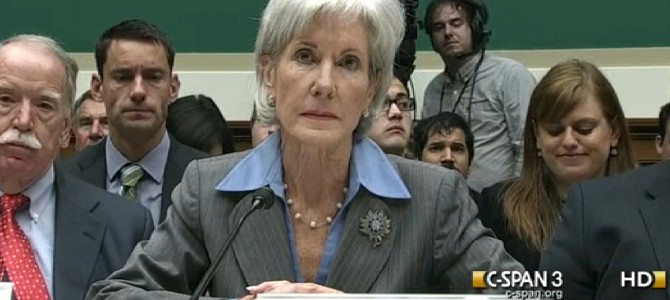The latest enrollment numbers for the ObamaCare show that just 364,682 Americans have purchased coverage through the health insurance exchanges created by the law—a figure that falls drastically short of the administration’s stated goal of enrolling 7 million people by March 31 and reflects ongoing problems with the federal exchange website, Healthcare.gov.
But it also reflects a lack of enthusiasm for the health insurance plans being offered on the exchanges. The striking thing about the Department of Health and Human Services’ update, released Wednesday, is the difference between how many people are eligible to enroll in an ObamaCare plan and how many people actually do so. In October, more than 1 million Americans were eligible for ObamaCare coverage, yet only about 106,000 chose to purchase plans. By the end of November, the number of eligible Americans who had not selected a plan rose to nearly 2 million, while the total number of those who have selected a plan was just shy of 365,000. Based on these figures, it seems that many people who are eligible for ObamaCare simply don’t want it or can’t afford it—or both.
Meanwhile, more than 800,000 Americans have logged onto the ObamaCare exchanges looking to purchase private coverage and instead discovered they are eligible for Medicaid or CHIP. This raises the prospect that the ObamaCare exchanges will actually trap far more people in Medicaid—the worst structure for health coverage in the country, with far worse outcomes than private insurance—than it will enroll in private plans.
Texas Health and Human Services Commissioner Kyle Janek recently expressed concerns about the Medicaid enrollment process through the exchanges in a letter to HHS Secretary Kathleen Sebelius. Much of the information being transmitted from the federal exchange to state Medicaid officials is apparently incomplete or inaccurate. “Our review of the spreadsheets for Texas found individuals with addresses from other states — including as far away as New York, fields that were left blank and people who are already receiving Medicaid or CHIP,” wrote Janek.
In Texas, which has more than 6 million uninsured residents, only 14,000 people signed up for coverage through November. That’s more than signed up in any other state with a federally-operated exchange, but only a small percentage of the state’s uninsured population.
At this rate, nearly 2 million people per month will have to enroll in ObamaCare coverage in order for the administration to reach its enrollment goal of 7 million by March 31—about 10 times the rate of the past six weeks. The 7 million figure comes from a May 2013 CBO estimate about how many people would sign up for coverage in 2014. The important thing isn’t necessarily the number, but the ratio of young and healthy people to older and sicker people. If the risk pool doesn’t have enough of the former, premiums will skyrocket in 2015.
But given how few people are signing up, and how difficult it is to use the online exchanges, it’s reasonable to assume that most of those signing up really need health insurance—which means they are most likely an older and sicker group. If this trend of sluggish enrollment continues into 2014, we should expect premiums on the exchanges, which are already higher than pre-ObamaCare premiums on the individual market, to rise dramatically—and for young people to stay away.
Mr. Davidson is a writer based in Austin, Texas, and a health care policy analyst at the Texas Public Policy Foundation.










